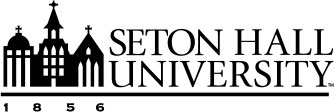Summer is the Season for Scholarly Metrics
Tuesday, May 20, 2025
 Take a deep dive into your Scholarly Metrics this summer with PURE, a new Faculty Scholarship system implemented by University Libraries on May 1, 2025. The PURE Faculty Scholarship
system shows faculty their scholarly reach through PlumX metrics, which show citations, usage, captures, mentions and social media. PlumX Metrics
provide insights into the ways people interact with individual pieces of research
output (articles, conference proceedings and book chapters) in the online environment.
Examples include research mentioned in the news or included in a policy citation.
PlumX gathers and brings together appropriate research metrics for all types of scholarly
research output.
Take a deep dive into your Scholarly Metrics this summer with PURE, a new Faculty Scholarship system implemented by University Libraries on May 1, 2025. The PURE Faculty Scholarship
system shows faculty their scholarly reach through PlumX metrics, which show citations, usage, captures, mentions and social media. PlumX Metrics
provide insights into the ways people interact with individual pieces of research
output (articles, conference proceedings and book chapters) in the online environment.
Examples include research mentioned in the news or included in a policy citation.
PlumX gathers and brings together appropriate research metrics for all types of scholarly
research output.
Natalie Lau, Scholarly Communication Librarian, states “we can use PURE for all full-time
faculty to ensure their published works, presentations, exhibitions and grants are
all represented on their PURE profiles.” Users can find PURE access and login information here. All data in PURE has been migrated by library staff, it does not use AI to pull
in content.
University Libraries creates scholarly metrics reports to assist faculty with the
tenure and promotion process. These reports include journal rankings, acceptance rates,
citations, h-indices, WorldCat counts, statistics from new PURE Faculty Scholarship
system (including usage, social media, public opinion and news mentions) to help faculty
prepare their tenure and promotion applications. This information was previously
captured in SelectedWorks, a system which was retired. Faculty can access PURE using
this link or through the PURE chiclet in PirateNet.
John Buschman, associate provost for Research and Innovation and dean of University
Libraries states “Scholarly metric reports are required as part of the Seton Hall
promotion and tenure process. These reports enable candidates to have an information
baseline about their scholarship. This is important when colleagues from different
disciplines review applications. Candidates need to contextualize their scholarship
in a format that can be understood by faculty across disciplines.” Faculty need to
demonstrate that an article appeared in a high-ranking journal, the circulation of
an article in the popular press and show how an article was picked up in the news,
on social media or in Public Opinion sources.
Traditional Metrics include Circulation figures, Citation numbers, External accolades,
Journal acceptance rates, Journal impact factors, Journal rankings, PlumX Metrics
and Scopus statistics.
Non-Traditional Metrics include Book publisher reputation, Book reviews, Documentaries,
External accolades, Juried exhibits, News Coverage, Open access vs. paywall journals,
Social media coverage, Ticket sales or art sales and peer publishing institutions,
or exhibiting, performing, presenting in same venues.
Best practices suggest faculty provide context about their scholarship. Scholarly
Metrics Reports are a launching pad to help provide context about scholarship to other
faculty members who are not in your discipline. Therefore, give context about your
scholarship within your own discipline and explain the impact of your scholarship
to those in other disciplines. All disciplines have different benchmarks, so it is
important to spend time thinking about how you can contextualize your scholarship.
It is also important to provide clarity about your scholarship. Give explanation about
solo authorship or name placement in articles with a series of authors within the
context of your discipline Disciplines such as law or diplomacy do not often have
impact factors. Explain this to your review committee How do you explain open access
vs. paywall journals within the context of your discipline. Describe grants applied
for and grants won. How does this advance your research agenda and enhance departmental
and university recognition?
Scopus Reports (a SHU database) also provides excellent coverage in the hard sciences
and some social sciences. In these disciplines, faculty can search for their author
profile that includes Journal rankings, Citations per article, Total citations and
Co-authors. Scopus has new reporting features that show document and citation trends
and scholarship by source.
Click here to request a Scholarly Metrics Report. If you have any questions about Pure, please contact [email protected].
Categories: Education, Research





